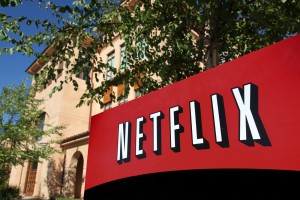Netflix's share price is down after it missed self-imposed net adds forecasts, but an extraordinary amount of marketing spend hints this quarter might just be a bump in the road.
July 17, 2018

Netflix’s share price is down after it missed self-imposed net adds forecasts, but an extraordinary amount of marketing spend hints this quarter might just be a bump in the road.
Over the last three months, Netflix forecast it would add 6.2 million subscriptions to its ranks, though reality told a different story as only grew by 5.2 million. For most, adding an additional 5 million customers would be cause for celebration, but such are the lofty expectations surrounding the Netflix brand, pre-market trading brought share price down 11.82%. Netflix is the golden child of Wall Street right now, share price has climbed 147% over the last twelve months, and we suspect it won’t be long before the wrongs have been corrected.
“We should not forget that Netflix is still the first truly global pay TV service – quite an accolade within a short period of time,” said Paolo Pescatore, Tech, Media & Telco Analyst. “This latest quarter may be a slight falter for Netflix, but it still sets the benchmark for its rivals. It underlines my belief that Netflix needs subscribers and it needs them fast. It is still growing, but not quickly enough in light of its growing costs.
“Typically, this is always a challenging quarter due to seasonality. And more so this quarter given the success of key global events such as the World Cup in driving fans to tune into live TV. This might have a further negative impact on its 3Q18 results.”
The team ended the quarter with a total of 130 million subscriptions, and revenues of $7.6 billion over the first six months. Another interesting number is $1.006 billion, the total spent so far in 2018 on marketing. This is an astronomical ratio, and demonstrates the importance of securing new subscriptions to the Netflix business model.
Netflix currently sits in the same tenuous situation as Facebook; while there might still room for growth, a reliance on a single revenue stream is far from the ideal situation. This is a dangerous route for Netflix to travel, as it will become increasingly expensive to secure the signature of new customers, though the rest of the industry will be becoming even more worried. Netflix is a heavyweight in this segment, with a very hefty bank account, will disruptors or those looking to diversify into content be able to compete with the Netflix financial clout?
“It needs to diversify and offer more than just a streaming subscription service,” said Pescatore. “By offering new features such as T-VOD or EST it would be well placed to generate additional revenue. Look at its rivals such Amazon who has a successful diversified business model. No pure play provider can compete with others that offer a range of services and business models. There will always come a point that it’s less about subscriber growth and more about revenue.”
From a marketing perspective, aside from entering the advertising dog-fight for subscribers, Netflix will find success by partnering the telcos. These are organizations which can offer credible access to potential customers in a non-intrusive manner, with Virgin Media being the most recent example. Netflix might arguably be the best content provider in terms of quality right now, but in terms of breadth of services and value, it will struggle to compete with Amazon before too long.
On the content side of things, an Amazon Prime account gives the user access to a wide range of content, including new original productions such as Utopia, a series written by Gillian Flynn, author of Gone Girl. This subscription also entitles users to free delivery on the eCommerce site, access to eBooks, music streaming services and other benefits. New partnerships and aggressive marketing campaigns are needed to continue subscription growth as the value proposition of competitors might be starting to eclipse the quality of Netflix programming.
A single revenue stream is not necessarily the most attractive position for a business, though if you still consider Netflix a genuine takeover target in the short- to mid-term, it’s not the end of the world.
This has not been the most successful quarter for Netflix, but it’s only a disappointment in comparison to the tearaway trail of the last couple of years. Over the next three months the team is forecasting revenues of $3.988 billion, growth of 33% year-on-year, with paid net adds up 5.2 million. The news will continue to be good for the next couple of years, but those will an eye on the long-game will point out a need to diversity the Netflix business model.
About the Author(s)
You May Also Like








.png?width=300&auto=webp&quality=80&disable=upscale)


_1.jpg?width=300&auto=webp&quality=80&disable=upscale)


.png?width=800&auto=webp&quality=80&disable=upscale)